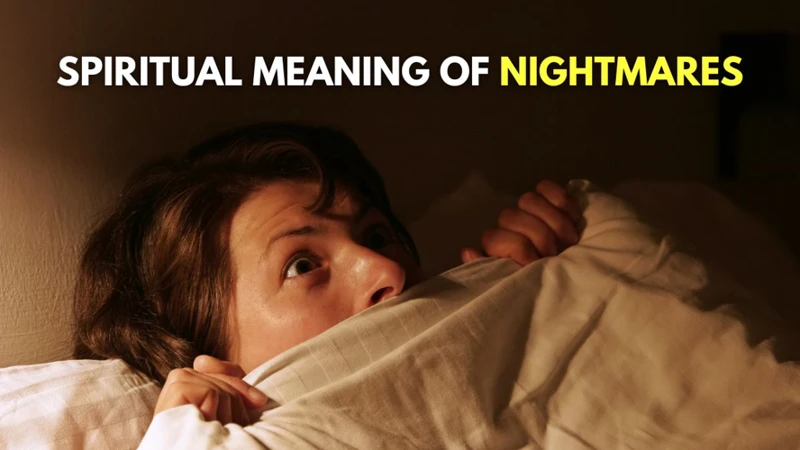Have you ever wondered what goes on in your furry friend’s mind when they’re fast asleep and letting out those little whimpers? It’s a fascinating and mysterious aspect of canine behavior that has captivated dog owners for years. Dogs, just like humans, experience dreams while they sleep, but what exactly do they dream about? In this article, we will delve into the science behind dog dreams, explore the significance of their whimpers during sleep, and provide insights on how to interpret the signs of canine dreaming. So, grab a cozy spot next to your pup, and let’s embark on this intriguing journey into the world of dog dreams.
Understanding Canine Dreams

Trying to understand the complexities of canine dreams can be both intriguing and perplexing. These fascinating slumber experiences are a window into the inner workings of our furry companions’ minds, yet interpreting their dreams is no easy task. To unravel the mysteries, we must first explore the science behind dog dreams. Dogs, much like humans, go through different stages of sleep, including the REM stage where dreams occur. During this stage, their brains are highly active, and they may exhibit various behaviors such as twitching, paw movements, and even vocalizations. As pet owners, it’s natural to wonder if those little whimpering sounds our dogs make during sleep are indicative of their dreams. Let’s delve deeper into the significance of these whimpers and uncover the secrets of our canine friends’ dream world.
1. The Science Behind Dog Dreams
The science behind dog dreams is a fascinating field of study. Researchers have found that dogs undergo similar sleep patterns to humans, including the rapid eye movement (REM) stage where dreams occur. During this stage, a dog’s brain activity increases, and they exhibit various physical movements and vocalizations. Studies have shown that the areas of the brain associated with memory and emotion, such as the hippocampus and amygdala, are active during REM sleep. This suggests that dogs may be processing and reliving past experiences, just like humans. While we can’t fully understand the content of a dog’s dreams, their behaviors during REM sleep provide valuable insights into their dream world. Whether it’s chasing squirrels, playing fetch, or simply experiencing random sensory inputs, it’s clear that our canine friends have rich and intricate dream lives that parallel our own. Understanding the science behind dog dreams allows us to appreciate the complexities of their inner world and strengthen our bond with our beloved furry companions. (source)
2. Do Dogs Whimper in Their Sleep?
Dogs have puzzled us for years with their various sounds during sleep, including those heart-melting whimpers. But do dogs truly whimper in their sleep? The answer is yes, they do. Whimpering during sleep is a common occurrence among dogs and can range from soft, muffled sounds to more audible cries. These whimpers are believed to be manifestations of their dreams and could be a reflection of their emotional state during those moments of slumber. While we may never know exactly what our canine companions are dreaming about, their whimpers provide us with a glimpse into their dream world and offer an opportunity for us to understand them better. So, the next time your dog lets out a gentle whimper during sleep, take a moment to appreciate the mysterious adventures happening in their mind.
Interpreting Whimpering in Canine Dreams

Interpreting the meaning behind the whimpering sounds our dogs make during dreams is like deciphering a cryptic puzzle. To make sense of these audible clues, we must first understand the different types of whimpers dogs may exhibit in their dream state. Some whimpers may indicate excitement or joy, while others may signify fear or anxiety. By paying close attention to the context of their dreams and the specific sound patterns of their whimpers, we can start to piece together the puzzle. It’s important to consider the overarching themes of their dreams and how they connect to their daily experiences. For example, if your dog recently encountered a scorpion and is whimpering during sleep, it could be indicative of a dream about a scorpion bite /dream-about-scorpion-bite/. Similarly, if your dog had a mishap with some broken eggs /dream-about-broken-eggs/, their whimpers might reflect those experiences. By unraveling the threads of their dreams through keen observation, we can gain insights into their inner emotional world and provide them with the comfort they may need.
1. Recognizing the Different Types of Whimpers
Recognizing the different types of whimpers in your dog’s sleep can provide valuable insights into their dreams. Dogs may emit various types of whimpers, each with its own distinct meaning. Some whimpers may be soft and muffled, indicating a calm and pleasant dream state. Others may be more intense and accompanied by rapid eye movement or twitching, suggesting a more vivid or active dream. Additionally, dogs may make whimpers that sound distressed or fearful, possibly indicating a nightmare or uneasy dream experience. By paying attention to the nuances of your dog’s whimpers during sleep, you can begin to decipher the various types of dreams they may be experiencing.
2. Identifying Common Themes in Dog Dreams
Identifying common themes in dog dreams can give us valuable insights into the inner thoughts and experiences of our beloved pets. While we can’t directly ask dogs about their dreams, we can observe their behaviors and make educated guesses about the content of their dreams. Some common themes that dogs may dream about include chasing, playing, social interactions, and even reliving past experiences. Pay attention to your dog’s body movements and vocalizations during sleep to gain a better understanding of the particular themes they may be dreaming about. For example, if your dog is twitching their legs and softly barking, they may be reliving a playful encounter with a fellow canine friend. By recognizing these themes, we can deepen our understanding of our furry companions and provide them with even more love and care.
3. Considering the Dog’s Daily Experiences
Considering the dog’s daily experiences is a crucial aspect of interpreting their dreams. Just like humans, dogs often incorporate elements from their waking lives into their dreams. Paying attention to their daily activities, interactions, and surroundings can provide insight into the themes and emotions they may be exploring while asleep. For example, if your dog had an eventful day at the park, their dream might involve running, playing fetch, or socializing with other dogs. On the other hand, if they experienced something unsettling or scary, such as a loud thunderstorm or a visit to the veterinarian, their dreams may reflect feelings of fear or unease. By taking into account the events and emotions that shape their daily lives, we can gain a better understanding of the content and meaning behind their dreams.
Signs of a Pleasant Dream

During the moments when our dogs are peacefully dreaming, there are certain signs that can indicate they are experiencing a pleasant dream. One such sign is when their bodies appear relaxed and at ease, with gentle and steady breathing. They may even let out soft and contented sighs. Additionally, their facial expressions may exhibit a sense of tranquility, often accompanied by slight movements of their paws or tail. In some cases, you might notice their whiskers twitching or their eyes fluttering beneath their closed eyelids. These subtle signs give us a glimpse into the delightful and peaceful scenarios playing out in their dreams. It’s a heartwarming sight that brings us joy, knowing that our furry companions are experiencing blissful and happy dreams.
Signs of an Unpleasant Dream

Signs of an unpleasant dream in dogs can manifest in various ways, indicating potential distress or discomfort during their slumber. One common sign is intense and rapid twitching or shaking of the body, coupled with whimpering or even growling sounds. It’s essential to note that these behaviors may not always indicate a nightmare, as dogs can also display similar movements during an exciting dream. However, if the whimpering intensifies, and the dog shows signs of restlessness such as pacing, excessive panting, or trying to hide, it may be a clear indication of a distressing dream. Paying attention to these subtle cues can help us better understand and comfort our beloved four-legged companions during their dream experiences.
Tips for Comforting Your Dreaming Dog
When it comes to comforting your dreaming dog, there are a few tips and techniques you can employ to ensure they feel safe and secure. Here are some strategies to help soothe your pup during their dream-filled slumber:
Remember, each dog is unique, and what comforts one may not work for another. Pay attention to your dog’s individual preferences and behaviors to best support them during their dreamtime adventures.
Conclusion
In conclusion, understanding canine dreams and interpreting the signs of a dreaming dog can provide valuable insights into their inner world. While we may never know exactly what our furry friends are dreaming about, paying attention to their behaviors, recognizing different types of whimpers, and considering their daily experiences can give us a glimpse into their dreamscapes. Whether they are happily chasing squirrels or overcoming fears, dogs’ dreams reflect their unique personalities and experiences. And as responsible pet owners, we can offer comfort and assurance to our dreaming dogs, providing a soothing presence during their slumber. So, next time you hear your pup whimpering in their sleep, remember to approach their dreams with curiosity and love, enhancing the bond between you and your beloved furry companion.
Frequently Asked Questions
1. Can dogs actually dream?
Yes, dogs can indeed dream! Scientific studies have shown that dogs go through similar sleep cycles as humans, including a period of Rapid Eye Movement (REM) sleep, which is associated with dreaming. During this stage, dogs may exhibit behaviors like twitching, paw movements, and even vocalizations.
2. How can I tell if my dog is dreaming?
You can usually tell if your dog is dreaming by observing their behavior during sleep. If you notice rapid eye movements behind closed eyelids, twitching muscles, or even whimpering sounds, it’s likely that they are experiencing a dream.
3. Is whimpering during sleep a sign of a nightmare?
Whimpering during sleep doesn’t always indicate a nightmare. Dogs might make whimpering sounds during a pleasant dream as well. It’s important to look for other signs, such as restlessness or fearful body language, to determine if your dog is having a bad dream.
4. Do all dogs dream the same way?
While all dogs experience dreams, the content of their dreams may vary. Just like humans, dogs have individual experiences and memories that can influence what they dream about. So, each dog’s dreams are likely to be unique to them.
5. Can I wake up my dog if they are having a nightmare?
It’s generally best to avoid waking up a dog during a nightmare. Instead, try gently calling their name or softly petting them to provide comfort and reassure them. Waking them abruptly may startle them or confuse them further.
6. Are there any common themes in dog dreams?
While the specific content of dog dreams is not fully understood, studies have shown that common themes in dog dreams often involve activities they engage in during their waking hours. For example, a dog who loves to play fetch may dream of chasing a ball.
7. What can influence the content of a dog’s dream?
A dog’s daily experiences and interactions can influence the content of their dreams. Positive experiences, such as receiving treats or playing with their favorite toy, may result in pleasant dreams. Similarly, negative experiences could potentially lead to unsettling dreams.
8. Do puppies dream differently than adult dogs?
Puppies and adult dogs likely experience dreams in a similar manner. However, since puppies have less life experience, their dreams may consist more of simple stimuli and sensations rather than complex scenarios.
9. Can dogs act out their dreams?
It is possible for dogs to act out their dreams, especially during REM sleep when their muscles may become temporarily paralyzed. You may notice your dog moving their paws, wagging their tail, or even running in their sleep as they act out the actions occurring in their dreams.
10. How can I comfort my dreaming dog?
If you notice your dog appearing restless or whimpering during a dream, you can gently wake them up by softly calling their name or offering soothing words. Providing a calm and comforting presence can help alleviate any distress they may have experienced during their dream.







